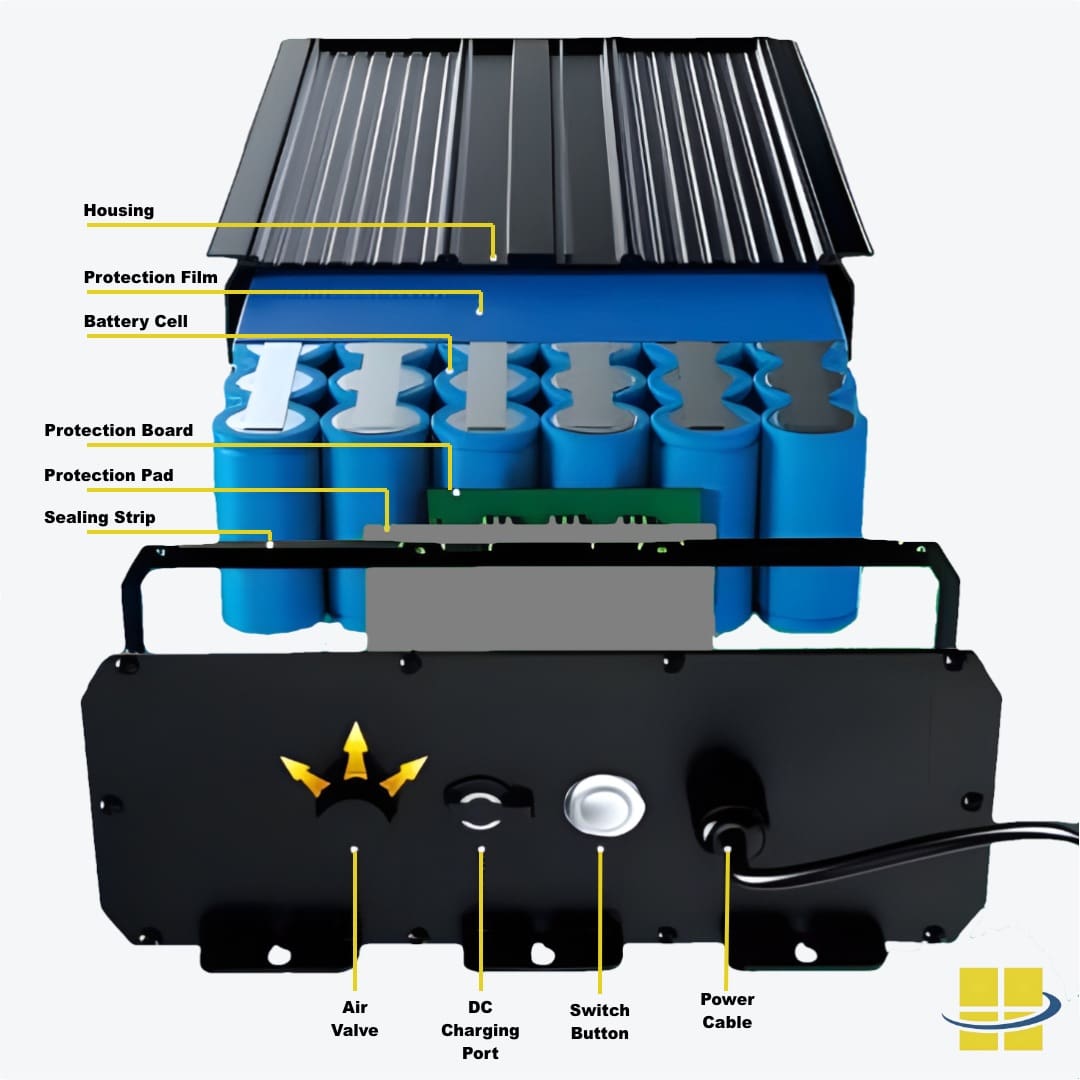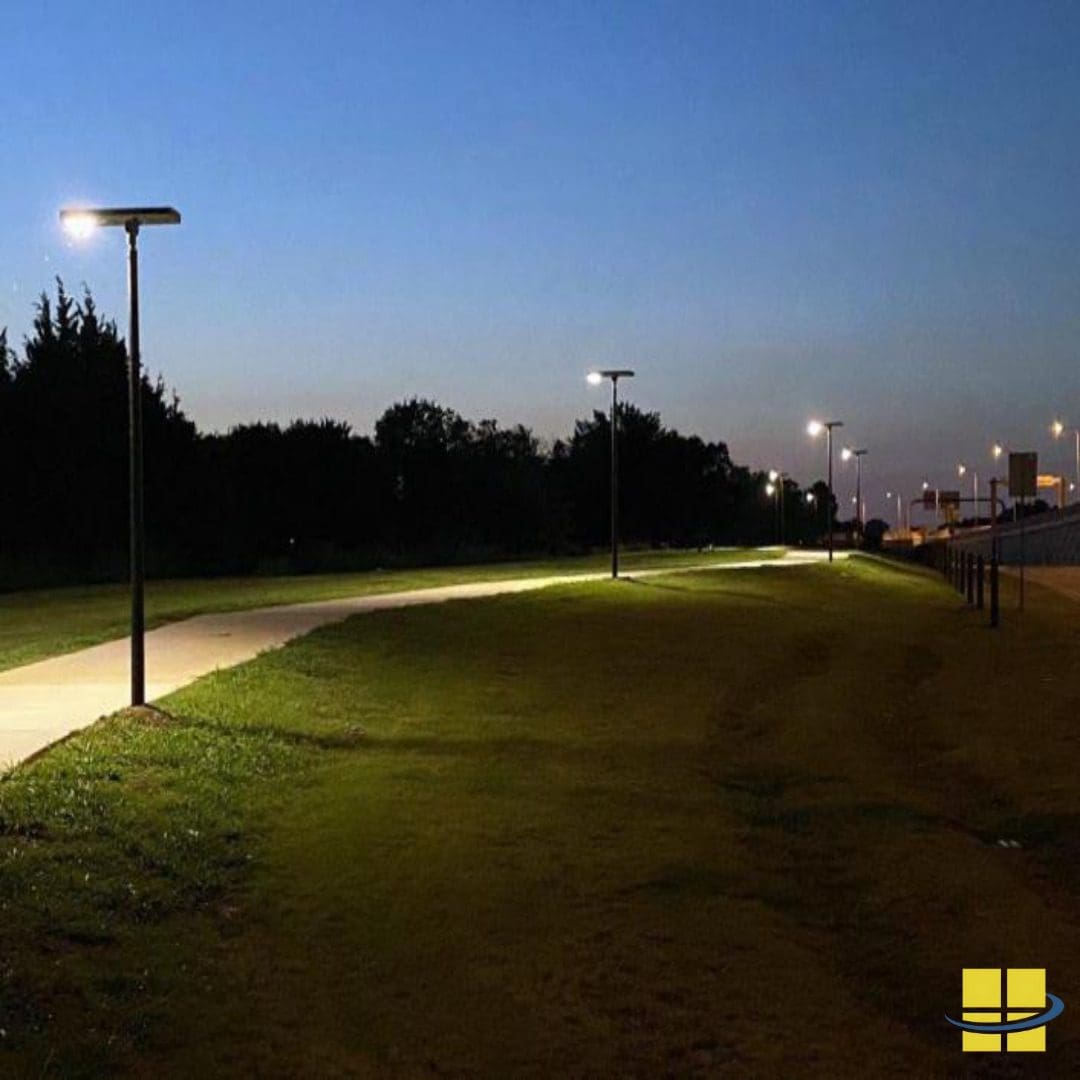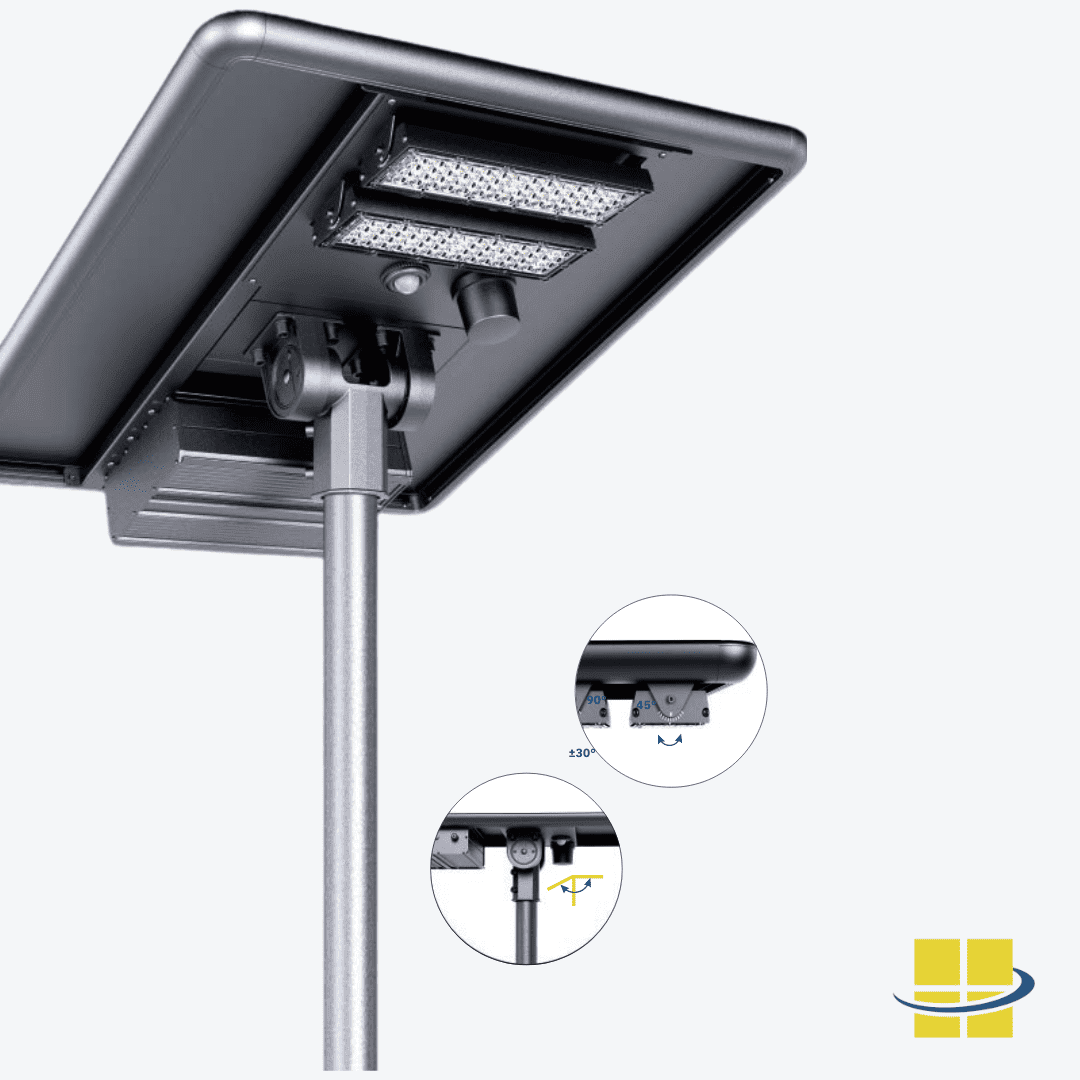
As sustainable and energy-efficient lighting solutions are embraced, led solar street light systems have become pivotal in commercial applications. At the heart of these advanced lighting systems lies the battery, a crucial element that dictates the performance, lifespan, and reliability of the solar luminaire. Among the various battery technologies available, Lithium Iron Phosphate (LiFePO4) outdoor solar light batteries have emerged as the superior choice for high-performance commercial LED solar lights. This comprehensive guide explains the intricacies of LiFePO4 batteries, exploring their advantages, technical specifications, and practical applications. Access Fixtures features SUNA – solar street light with lithium battery in this guide,
Key Takeaways
-
-
Superior Longevity and Performance: LiFePO4 batteries offer an impressive number of charge cycles, making them ideal for applications requiring frequent recharging and discharging.
-
Safety and Stability: These batteries boast a stable chemical composition, reducing risks associated with overheating and combustion.
-
High Efficiency and Consistent Power Delivery: LiFePO4 batteries provide high charge and discharge efficiency, ensuring consistent performance even under high demand.
-
What Are Solar Street Lights?
Solar street lights are autonomous lighting systems designed to illuminate outdoor spaces without relying on the electrical grid. These systems utilize solar panels to capture sunlight and convert it into electricity, which is then stored in batteries during the day. At night, the stored energy powers LED lamps, providing bright and reliable lighting. Solar street lights are an environmentally friendly and cost-effective solution, commonly used in public spaces such as roads, pathways, and parking lots. By harnessing renewable energy, these lights reduce carbon emissions and energy costs, making them an ideal choice for sustainable urban development.
Why LiFePO4 Rechargeable Solar Light Batteries are Essential
Outdoor solar lighting solutions have revolutionized the way we illuminate our surroundings. The convenience of using a remote control to adjust settings and enhance user experience further adds to their appeal. From streets and parks to sports arenas and commercial premises, solar lights offer an eco-friendly and cost-effective alternative to traditional lighting systems. However, the effectiveness of these systems largely depends on the quality of the battery used. Lithium Iron Phosphate (LiFePO4) solar lighting batteries stand out as the optimal choice for commercial solar lighting, thanks to their exceptional longevity, safety, and efficiency. Read on to learn about the critical role of LiFePO4 batteries in outdoor solar lights, their key features, and why they are preferred over other battery technologies. We will also discuss the factors affecting their performance, typical life cycles, and real-world applications. By the end of this post, you will have a thorough understanding of why LiFePO4 batteries are the go-to solution for high-performance commercial LED solar lights.
Components of the Battery Pack
The battery packs include several essential components: housing for protection, protection film to shield the battery cells, and battery cells for energy storage. The protection board manages and safeguards the cells, while the protection pad cushions against impacts. The sealing strip prevents moisture and dust entry, and the air valve releases excess pressure. Charging is facilitated through the DC charging port, with an easy on/off switch button and a power cable that connects the battery pack to the device.
Click the image on the right to enlarge.
Using Lithium Iron Phosphate (LiFePO4) Batteries in Solar Lighting Fixtures
Access Fixtures leverages the benefits of Lithium Iron Phosphate (LiFePO4) batteries for their solar outdoor lighting fixtures. The two solar street light design integrates components like solar panels, LED chips, and batteries into a single unit, enhancing energy efficiency and functionality. These rechargeable batteries are chosen for their long life cycles, safety, and stability. Let’s delve into the detailed explanations of the terms and factors that make LiFePO4 batteries the preferred choice for solar light batteries.
What Are Solar Light Battery Life Cycles?
A battery’s life cycle is defined as one complete discharge and recharge cycle, transitioning from a 100% charge to 0% and back to 100%. This cycle doesn’t necessarily occur in a single charge. For instance, if you use half of your solar light fixture’s charge through the night and recharge it fully the next day, it would count as one charge cycle after repeating the process the following night. Essentially, it might take two or even three days to complete one cycle. LiFePO4 rechargeable solar light batteries have a limited number of charge cycles before their performance diminishes. Upon reaching the cycle count, replacing the battery is recommended to maintain optimal performance. Although the battery can still be used after reaching its maximum cycle count, a reduction in battery life will become noticeable over time.
Key Factors Affecting Lithium Iron Phosphate (LiFePO4) Life Cycles
Depth of Discharge (DoD)
Depth of Discharge (DoD) refers to the amount of battery capacity used before recharging. For example, a 100% DoD means the battery is fully discharged, while a 50% DoD indicates that half of the battery’s capacity is used. Lower DoD generally results in more life cycles, extending the battery’s overall lifespan.
Charge/Discharge Rates
The speed at which the battery is charged and discharged significantly impacts its lifespan. Slower rates typically lead to a longer life cycle, while rapid charging and discharging can shorten the battery’s longevity.
Temperature
Operating temperature plays a crucial role in battery life. LiFePO4 rechargeable batteries perform best at moderate temperatures and may degrade faster at very high or low temperatures. Proper temperature management is essential to maximize the battery’s lifespan.
Voltage Range
Maintaining the battery within a recommended voltage range during charging and discharging helps prolong its life. Deviating from this range can cause irreversible damage and reduce the battery’s efficiency and longevity.
More Details on Temperature and LiFePO4 Battery Life Cycles
Manufacturers of lithium batteries often specify an operational temperature range for their batteries, typically between -22°F to +176°F (-30°C to +80°C), with an optimal range of 14°F to 122°F (-10°C to +50°C). These temperatures vary depending on the brand and model. It is important to note that the operational temperature range usually refers to discharging the battery only.
Charging a lithium battery under different conditions is crucial. The optimum ambient temperature for charging a lithium battery is between 41°F to 113°F (+5°C to +45°C). Charging below 32°F (0°C) should be avoided as it may potentially reduce the battery lifespan.
Charging a lithium battery below 32°F (0°C) can cause a chemical reaction known as Lithium Plating. This reaction increases the internal resistance of the battery and reduces the rate of chemical metabolism. Over time, this leads to a permanent reduction in the battery’s capacity, which continues each time the reaction occurs.
Fortunately, batteries typically recharge during the day when the sun is out. The solar panel, light fixture, and battery are warmed by the sun, reducing or eliminating the issue of Lithium Plating. Access Fixtures has installed solar lights in Massachusetts and other cold climates without experiencing premature battery failures.
Typical Life Cycles of Lithium Iron Phosphate (LiFePO4) Batteries
LiFePO4 batteries are renowned for their longevity, typically achieving between 2,000 to 5,000 cycles at an 80% Depth of Discharge (DoD). Here’s a more detailed breakdown:
- 100% DoD – About 2,000 cycles
- 80% DoD – About 3,000 cycles
- 50% DoD – About 5,000 cycles or more
As of this publication, Access Fixtures’ SUNA solar sports and solar area lights for outdoors have batteries rated for 3,000 cycles, making them a reliable and long-lasting choice for commercial applications.
Advantages of Lithium Iron Phosphate (LiFePO4) Batteries
Long Lifespan
LiFePO4 batteries are ideal for applications requiring frequent charging and discharging due to their long cycle life.
Safety
These batteries have a very stable chemistry, significantly reducing the risk of overheating, combustion, or explosion.
High Efficiency
LiFePO4 batteries offer high charge and discharge efficiency, often exceeding 90%, ensuring that more energy is stored and used effectively.
Consistent Performance
LiFePO4 batteries provide consistent power delivery even at higher discharge rates, maintaining performance throughout their lifespan.
Solar Powered Street Lights
Solar powered street lights are a specific type of solar street light that leverages solar panels to generate electricity and power LED lights. These lights are designed to deliver consistent and reliable illumination, even in areas without access to the electrical grid. Equipped with lithium ion batteries, solar powered street lights store energy during the day and provide power at night, ensuring continuous operation. They are a popular choice for municipalities, businesses, and homeowners aiming to reduce their carbon footprint and energy expenses. By integrating advanced technology and renewable energy, solar powered street lights offer a sustainable and efficient lighting solution for various applications.
Motion Sensor Technology
Motion sensor technology is a key feature in many solar street lights, enhancing their efficiency and functionality. This technology uses sensors to detect movement and adjust the light’s brightness accordingly. When motion is detected, the light provides a bright illumination, ensuring visibility and security. In the absence of motion, the light dims to conserve energy, extending the battery life. This energy-saving feature not only reduces power consumption but also ensures that the solar street lights provide a bright light when needed most. Motion sensor technology is an essential component of modern solar street lighting, offering both security and energy efficiency.
Applications for Lithium Iron Phosphate (LiFePO4) Batteries in Solar Street Lights
LiFePO4 batteries are widely used in various applications due to their robustness and reliability, including:
Electric Vehicles (EVs): LiFePO4 batteries are used in electric cars, buses, and bikes due to their high energy density, safety, and long cycle life, providing reliable power and extended driving ranges.
Renewable Energy Storage Systems (Solar and Wind): These batteries efficiently store energy generated from solar panels and wind turbines, ensuring a stable electricity supply even when the sun isn’t shining or the wind isn’t blowing. Their durability makes them ideal for off-grid and grid-tied systems.
Backup Power Systems: LiFePO4 batteries are essential in uninterruptible power supplies (UPS) and backup power solutions for homes, businesses, and critical infrastructure, offering reliable power during outages.
Marine and RV Batteries: They are used in boats and recreational vehicles due to their lightweight, deep discharge capability, and resistance to harsh environmental conditions, providing reliable power for extended trips.
Access Fixtures’ Solar Light Fixtures: LiFePO4 batteries power solar lighting systems, including street, pathway, and area lights, delivering consistent performance and reducing maintenance needs. Their ability to handle frequent charge and discharge cycles makes them ideal for LED solar lighting applications.
Conclusion
Lithium Iron Phosphate (LiFePO4) batteries offer a reliable, long-lasting power solution with a significant number of charge and discharge cycles, making them a cost-effective option for high-performance commercial LED solar lights. Their consistent performance and safety features make them the preferred choice for many demanding applications, including Access Fixtures’ solar light fixtures. For more information about Access Fixtures’ solar light fixtures or to explore how solar lighting can benefit your application, speak with an Access Fixtures lighting specialist.
Outdoor Solar Light Fixture Batteries Frequently Asked Questions
You have LED outdoor solar light battery questions. We have answers. If you have a question that isn’t answered below, contact an Access Fixtures lighting specialist at (800) 468-9925 or click here to visit our customer service page.
What makes LiFePO4 batteries better than other lithium batteries for solar lights?
LiFePO4 outdoor solar light rechargeable batteries are preferred due to their long lifespan, safety, and high efficiency, making them ideal for frequent charging and discharging required in solar light applications.
How does Depth of Discharge (DoD) affect battery life?
A lower DoD generally results in more life cycles, extending the battery’s overall lifespan. For example, a 50% DoD can achieve around 5,000 cycles.
Can LiFePO4 batteries be used in cold climates?
Yes, LiFePO4 outdoor solar light batteries rechargeable can be used in cold climates. However, it’s important to manage charging temperatures to avoid Lithium Plating, which can reduce battery capacity.
What is Lithium Plating, and why is it a concern?
Lithium Plating occurs when charging a lithium battery below 0°C (32°F), leading to increased internal resistance and reduced chemical metabolism, permanently decreasing battery capacity.
How often should LiFePO4 batteries be replaced in solar lights?
LiFePO4 batteries typically last between 2,000 to 5,000 cycles. Once the cycle count is reached, replacing the battery is recommended to maintain optimal performance.
Are LiFePO4 batteries safe to use?
Yes, LiFePO4 batteries are known for their stable chemistry, significantly reducing the risk of overheating, combustion, or explosion.
How do charge/discharge rates affect LiFePO4 battery life?
Slower charge and discharge rates generally extend the battery’s life cycle, while rapid rates can shorten its lifespan.
What applications are ideal for LiFePO4 batteries?
LiFePO4 batteries are ideal for electric vehicles, renewable energy storage, backup power systems, marine and RV batteries, and commercial solar light fixtures.
What is the optimal temperature range for charging LiFePO4 batteries?
The optimal ambient temperature for charging LiFePO4 rechargeable batteries is between +5°C to +45°C (41°F to 113°F).
Why does Access Fixtures use LiFePO4 batteries in their solar outdoor lighting fixtures?
Access Fixtures uses LiFePO4 solar batteries for their long life cycles, safety, and stable performance, ensuring reliable and efficient operation in their rechargeable batteries solar lights.
How do LiFePO4 batteries compare to rechargeable nickel and NIMH battery options?
While LiFePO4 batteries offer longer lifespans and greater safety, rechargeable nickel and NIMH batteries (Nickel-Metal Hydride) are often used in various Landscape lighting batteries and other solar NIMH applications. NIMH batteries are known for their metal hydride chemistry, providing a cost-effective and readily available alternative. However, for high-performance requirements, LiFePO4 batteries remain the superior choice.
For detailed information on how LiFePO4 batteries and NIMH batteries compare, especially in terms of efficiency, safety, and longevity, contact an Access Fixtures lighting specialist.



